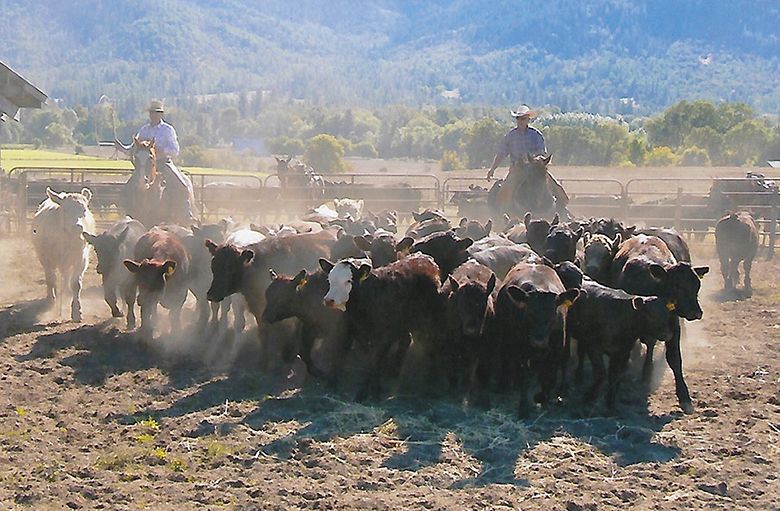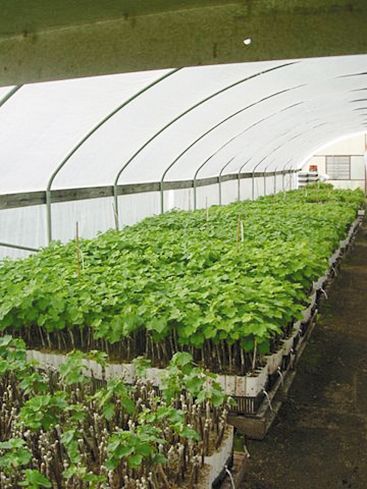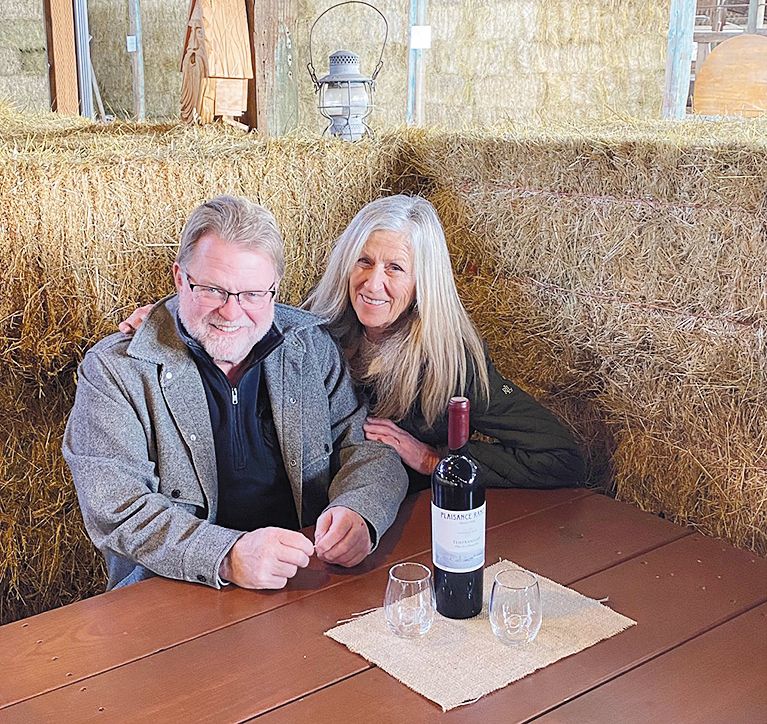Homeward Bound
An Oregon vintner’s journey to reclaim his grandfather’s legacy — one rare grape at a time




By Gail Oberst
Joe Ginet, owner of Plaisance Ranch with wife Suzi, called it the “suitcase method.” Long before the U.S. imposed strict import rules for wine grapes in the 1940s, immigrants from European winegrowing regions– including Joe Ginet’s grandfather– brought cherished cuttings from home. Some plantings still thrive in vineyards today.
But two brought to Southern Oregon are anything but common. The difficulty Ginet experienced when bringing his grandfather’s grapes to Oregon was a challenge most winegrowers wouldn’t have considered.
In 1905, Ginet’s grandfather came to Southern Oregon from his family’s ancestral home in the western valleys of the French Alps, the Savoie region. In his “suitcase” were cuttings of Mondeuse, his grandson recalled. Grandpa Joseph Ginet had dreams of farming vineyards like those back home. Sadly, that dream was short-lived for Grandpa. His original 1905 plantings on a small farm near Jacksonville were uprooted by Grandpa Ginet’s early death, the Depression and Prohibition. Undeterred, his grandson was determined to be a farmer.
Fast-forward past a degree in animal science from UC Davis and through 28 years of dairying in Alaska and Oregon. Joe and Suzi settled on a 310-acre ranch near Williams in the Applegate Valley, eventually selling their milk cows and establishing a beef herd that ranges most of the property. In 2000, with help from relatives, the Ginets began the arduous process of certifying Mondeuse rootstock imported directly from Savoie to plant in their vineyard.
Importing grape cuttings today is not as easy as in Grandpa’s lifetime (see sidebar). The approval process for Ginet-the-Younger and other would-be vine importers takes years of inspections, testing, research, growing, harvesting and finally winemaking. For Ginet, it began with gathering cuttings of Mondeuse from his ancestral village of Saint Jean de la Porte, where wine has been made since the 1700s. The cuttings were sent to Cornell University for inspection and treatment for insects, fungus and bacteria. Once the plant material passed muster at Cornell, the next stop was quarantine at Missouri State University, where they were propagated. The following year, a slurry was created from the clippings and an electron microscope was used to inspect for virus DNA. Once approved, the plants grew another year before they were shipped to Plaisance Ranch. Ginet then propagated the plants on his own soil, divided and grafted them onto rootstock. Within four years, he had established a block of 400 Mondeuse plants. More time passed before the grapes were harvested and made into wine. After aging two years in barrel, Plaisance Ranch released its first Mondeuse in 2009.
“This is why I like to say the most important ingredient in fine wine is patience!” quipped Ginet.
Ginet’s patience had yet to wear thin. In 2017, he began the importation process of another grape, Persan, a variety often blended with Mondeuse in Savoie. The Persan took even longer after a virus was detected during the slurry stage at UC Davis, adding more than a year to the process. Technicians there mist-propagated a microscopic sample from a growing shoot and formed a slurry from the new plants. After finding no virus DNA in the shoots, they were allowed to grow. Following four years in quarantine, the Persan plants were finally released to Ginet.
“We got our first harvest of Persan last year– a whopping 278 pounds. As is sometimes done in Savoie, we blended it with Mondeuse to create a barrel of Rouge Prestige,” explained Ginet.
Beyond the sentimental connection with Ginet’s origins in Savoie, cultivating two grape varieties rarely found in the U.S. has its advantages. It helps stand out in a market brimming with familiar wines.
Ginet described Mondeuse, now in its 13th year, as a strong-legged wine “… a big, spicy Pinot on steroids.” The grape, a distant relative of the ancient Syrah, finds its je ne sais quoi from the soil. As a result, Mondeuse from Savoie and Plaisance Ranch taste distinctly different. Persan, with a release date still two years away, is more tannic, heavy and inky than Mondeuse, similar to a Petit Verdot.
The Ginets aren’t the only Oregonians with a sentimental fondness for homeland varieties. Among those planting grapes reminiscent of homes elsewhere are Lexème Wines, in Douglas County. White grape Chasselas is a nod to the western winegrowing region on the French side of Switzerland, where owner Monja Hudson-Desmeules grew up. Monja and her winemaker husband Christopher had a slightly easier time acquiring Chasselas grapevines. Although rare, it is already cultivated in California and Oregon.
Other winemakers who immigrated to Oregon have chosen to work with familiar grapes. For example, Juan Pablo Valot, a native of Argentina and owner of Valcan Cellars in Corvallis, features many varietals, including Malbec, common in his home country.
Oregon winemakers list sentimental and familial connections as reasons for focusing on particular varieties that remind them of home. Yet few stories are more unique than Plaisance Ranch, the only U.S. winery growing Mondeuse and Persan directly from the family’s region in France. The two varieties now have a home in Southern Oregon.
Sidebar
Grandpa Ginet wasn’t the only immigrant with a packed suitcase of wine grape cuttings from the old countries. Most popular wine grape varieties in the U.S. are non-native, making their way here through legal nurseries or in the luggage of settlers before strict rules were established. Species indigenous to North America include Concord, Catawba and Niagara, all cultivars of the fox grape. Other native species include muscadine, summer grape and sand grape. To combat the spread of phylloxera, native cultivars are often used as rootstock.
According to the USDA, while international protections began decades before, the first Plant Quarantine Act was enacted in 1912 to protect U.S. agriculture from foreign plant disease. In 1948, the first U.S. quarantine laws established grapevine quarantine and testing protocols. By the 1950s, the United Nations adopted International Plant Protection protocols.
Today, direct importation of foreign grape propagation materials into the U.S. without a permit is strictly prohibited. Specific quarantine rules about grape stock importation into the U.S. or across state borders can be found on Oregon’s Department of Agriculture website: www.oregon.gov/oda/plant-health/Pages/grape-quarantine.aspx.
Plaisance Ranch
16955 Water Gap Rd., Williams
Summer hours: Wed. − Mon., noon - 6 p.m. (Last pour 5:30 p.m.)
www.plaisanceranch.com
(541) 846-7175
Gail Oberst has been a Northwest writer, editor and publisher for decades. Among her favorite gigs was business editor for the News-Register, and editor pro temp for three months for the Oregon Wine Press. Inspired by the OWP, she founded the Oregon Beer Growler with her family, later selling it to Oregon Lithoprint. She continues to edit and write a wide range of articles for magazines, and weekly and regional newspapers. Recently, she published her first fiction novel, Valkyrie Dance, available on Amazon, and is working on her second, San Souci. She lives with her husband, Michael Cairns, a retired ecologist, in Independence, Oregon. They have four grown children and seven grandchildren.












